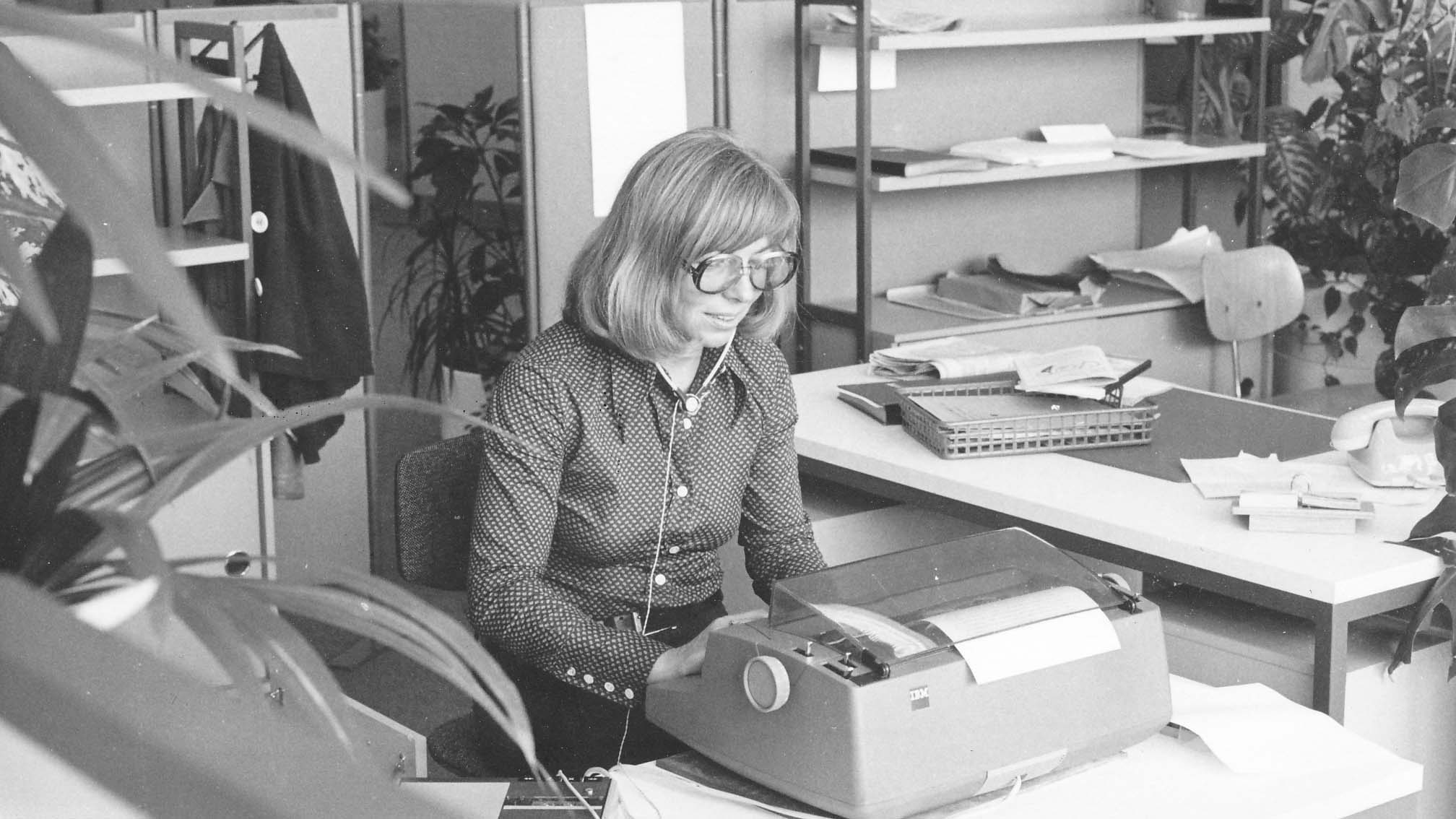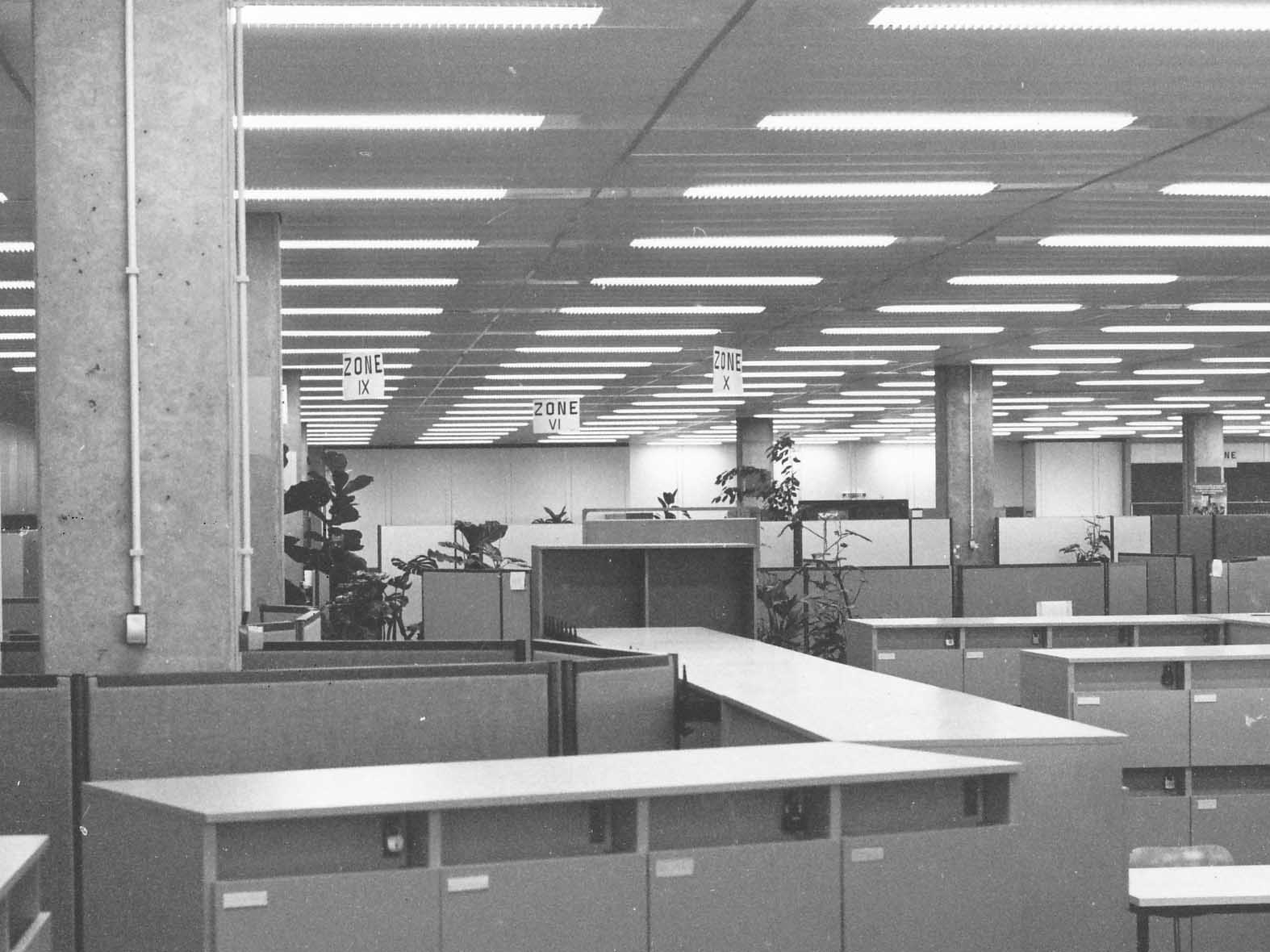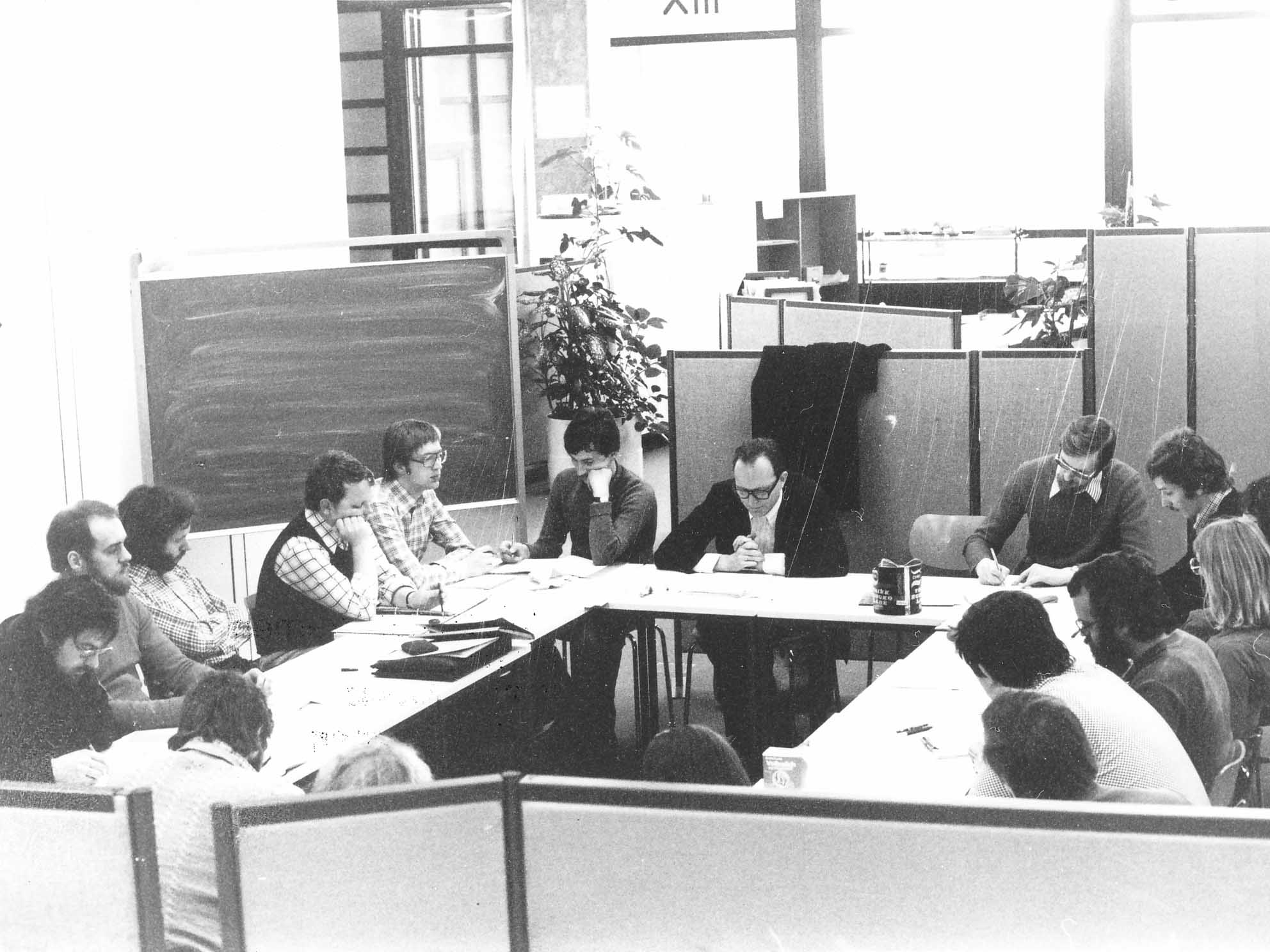
© Universität Bremen
Back Then: The Open-Plan Office Experiment
All status groups in one large room – that was one of the new ideas at Bremen’s reform university in its early years. An unsuccessful experiment.
At the University of Bremen, the open-plan office for the degree course in career training/politics (AL/P) stemmed from an idea that the planning commission for teacher training had at the end of the 1960s. The AL/P degree course played a significant role during the early years of the young university. It combined the fields of politics, economy, technology, and history; the course trained teachers for pre-professional teaching. This was mainly meant to take place in the form of projects in small groups.
The founding senate of the university took on this idea as the members saw it as a way of implementing the ideals of the reform university: flat hierarchies, short communication paths, and the promotion of understanding for the work of other status groups (students, administration staff, and university lecturers). The work in small groups was intended to secure a student/teaching staff ratio of 1:10, which the university management had agreed upon with the senator’s office. The entire first story of the newly constructed GW2 Building’s parking deck was intended to be the location of the open-plan office.

© Universität Bremen
Task: Turning the New Build into a Work Space
In 1972, the University Executive Board charged the renowned company “Quickborner Team” with the planning of the furnishings and furniture. The expectations were high – the largest new university build in Germany at the time needed to be transformed into a functioning workspace. Alongside space for classes of varying sizes, the planners were to create space for small groups, individual working spaces, and a workshop with all sorts of technical equipment – including a circular saw, several sewing machines, and a handset for librarians.
The Quickborner Team calculated that they needed 5,893 square meters of space. However, only 3,154 square meters were available. Much like today, the argument that not all enrolled students and all staff are always present at the same time was employed to argue against the missing capacities (space, teaching staff, and technical equipment).
Virus Transmission Point in Colder Months
A reduction in the number of students was not at option at the time. Savings were made with the common areas. The open-plan office already had a hard time in the planning phase – the general argument that the noise level was too high was made against open-plan offices. There was also criticism due to the lack of places of retreat and a high level of social control. Open-plan offices were viewed as virus transmission points in the colder months.

© H. Engelhardt
Especially the status group of university lecturers had reservations with regard to moving into the open-plan office. Five professors unsuccessfully filed a lawsuit with Bremen Administrative Court concerning their intended place of work. They demanded lockable, individual offices.
Cold Feet
However, the University Executive Board had to admit that the project had failed at the beginning of 1976. Only a few participants felt that the working conditions were suitable or even favorable. Alongside the acoustics, the climatic conditions also caused displeasure. The air conditioning unit didn’t even come close to fulfilling its task. Alone in 1974, the heating was out of order on 89 days and insufficient insulation of the parking deck roof meant that there were many cold feet.
Moreover, a lack of behavior suitable for an open-plan office was also a source of discontent. The fact that the staff were able to see each other led to them shouting to each other instead of using the phone. It only became quiet when personal matters were discussed. It was also the case that furnishings and personal belongings kept on disappearing.
Supervision Ratio of 1:15
The senatorial office also played a role in the failing of the project. The work in small groups formed a core part of the open-plan office concept. However, the required supervision ratio of 1:10 was never attained by the degree course. In 1973, Bremen took on the national ratio of 1:15 for the degree courses in the humanities and social sciences, which surely moves the discipline’s representatives to tears when looked at from today’s perspective. When coupled with the constructional deficits, the unfavorable supervision ratio finally led to the failure of the open-plan office project.